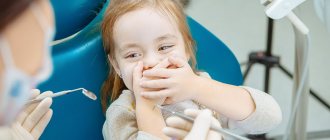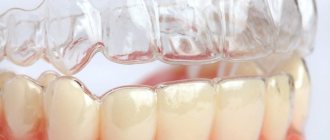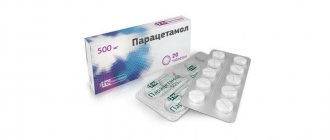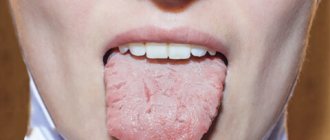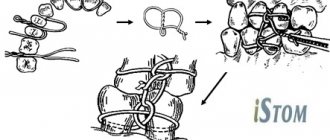Pimples on the tongue - what are they?
The mucous membrane in the mouth and tongue does not have sebaceous glands, so typical pimples cannot form on it. Such formations have two formation mechanisms:
- Under the influence of damaging factors, viruses or bacteria, the mucous membrane stratifies, under the top layer of which liquid accumulates and small bubbles form. If such a formation is not infected, then its contents will be transparent, but if infection has penetrated into its cavity, then suppuration is possible - the vesicle will turn white. If blood gets into the liquid, then this formation takes on a red or dark tint. The blisters may burst and painful ulcers form in their place.
- Sometimes, in response to inflammation, cells on the surface of the tongue begin to actively divide and slough off. Whitish or red formations form that resemble ordinary pimples, but at the same time they are only enlarged papillae.
Causes of pimples
There are many reasons for the appearance of such formations on a child’s tongue. Let's try to understand each of them in more detail.
Tongue injuries
After three months of age, babies begin to actively explore the world around them, including trying to taste everything. But the objects that enter the child’s mouth are not always sterile. Older children often have a habit of chewing on sharp objects, which can also scratch or injure the tongue. Even minor trauma to the mucous membranes in combination with the ingress of microbes can provoke an inflammatory reaction and the appearance of painful pimples, which are often localized on the tip of the tongue.
Candidiasis or thrush
In children under one year of age, the immune system is not fully formed, so any disease leads to a decrease in the body’s protective properties. The consequence of this is candidiasis in the oral cavity - active growth of fungi of the genus Candida on the mucous membranes, which can also be provoked by taking antibiotics. One of the typical manifestations of thrush is the appearance of pimples and a cheesy white coating on the entire tongue surface, spreading to the entire oral cavity. If you remove such plaque, you can find redness, swelling and even the appearance of small ulcers underneath it.
Stomatitis
With stomatitis, a large number of small white pimples appear on the root of the tongue at its base, on its lateral surfaces or at the tip, which are very painful and cause discomfort while eating or talking. Such pimples can merge to form extensive ulcers. In severe cases, the child feels generally unwell and has a high body temperature.
Allergy
Children under two years of age are more likely than adults to have allergic reactions. One of the manifestations of allergies is the appearance of small whitish or red pimples on the tongue. They can be located both at the tip and in the area of the root of the tongue and move to other parts of the oral mucosa: lips, gums, palate. Most often, such formations bother the child, itch and cause pain when eating and swallowing. But this is not characterized by an increase in body temperature.
An increase in allergy symptoms and the appearance of new pimples is caused by eating a product to which you are hypersensitive. Often the cause of such allergic reactions is toothpaste or other oral care products, even if they are recommended for use in children.
Angina
A bacterial infection that affects the tonsils in children can also spread to the lymphoid tissue, which is located at the root of the tongue closer to the throat. This is accompanied by the appearance of white pimples with a purulent coating in the tongue area. When the pus is removed, areas of redness and slight swelling are exposed. The formations are painful, interfere with normal swallowing and significantly worsen the child’s well-being: he becomes capricious, refuses to eat, and his body temperature rises. Often, if there are such pimples near the throat, you can feel enlarged lymph nodes.
Herpetic infection
Infection with the herpes virus most often occurs in childhood, and when the body’s immune defense is reduced, the infection can worsen. In this case, watery small pimples on a red background appear on the tongue, which can also appear on the child’s lips and throat. They are very painful and after opening them, shallow ulcers appear, which prevent the child from eating and talking normally.
Dysbacteriosis and unbalanced nutrition
Errors in the nutrition of a child, especially of a younger age, as well as disturbances in the normal composition of the intestinal microflora can lead to glossitis - inflammation of the mucous membrane of the tongue. This leads to the fact that the epithelium of the papillae begins to actively divide, they take on the appearance of inflamed red or whitish pimples. They rarely bother the child; sensitivity to hot, cold or sour foods may only change.
Rash in children. Let's look at the reasons.
Tretyakova Daria Alexandrovna
Pediatrician
April 25, 2021
In the life of every parent, sooner or later there comes a time when, suddenly, some acne appears on the body of their beloved child. It's a rash. A rash is any change on the skin. It occurs in many diseases and conditions, some of them are very dangerous.
Let's try to figure out what the rash is, in what cases it appears, what it is accompanied by, and how mom and dad should behave so that it goes away faster.
Let's start with the simplest thing - insect bites. Primarily mosquitoes. As a rule, this rash causes surprise in early spring and late autumn, when mosquitoes are not yet remembered or are already forgotten. In modern winter conditions, mosquitoes can live indoors (for example, in the basement) almost all year round. Of all family members, small children are the most “tasty” for mosquitoes.
Parents notice changes in the skin in the morning, after the child wakes up. Mosquito bites are characterized by the appearance of pink or reddish spots mainly on open areas of the body: hands, forearms, feet, legs, i.e. those parts of the body that are not covered by pajamas, and there must be elements on the face, or, sometimes, on one half of it (if the child slept on his side). Most often, this rash is accompanied by itching, but not very severe. The child's general condition does not suffer. He behaves as usual - plays, runs, throws things around, watches cartoons and eats with appetite. If the child is not allergic to mosquito bites, then they do not require special treatment. It is enough to turn on the fumigator in the children's room (now there are special ones for children), and the problem will be solved by itself. In case of a severe allergic reaction, accompanied by severe swelling, redness, severe itching, it is necessary to give the child an antiallergic drug (for example, suprastin). You can treat bites with drugs such as Psilobalm or Fenistil-gel, which relieve swelling and irritation.
The next fairly common situation in which a rash occurs is an allergic reaction. Typically this is a food allergy. There are children who have allergies from early childhood. Parents of such children know exactly what food can be given to their child and what not. And they know very well how to care for the skin in this situation. Now I would like to dwell in more detail on the problem of the sudden development of allergies in a previously healthy child. This situation can develop when eating previously unfamiliar foods, exotic fruits, vegetables, and seafood. Or if familiar dishes are prepared in a special way, using a large number of spices and aromatic additives. Or if your child, having lost control, ate a pack of chips, snacked on tangerines, chocolates and washed it all down with a carbonated drink.
An allergic reaction appears quite quickly. Red spots of irregular shape, prone to merging and accompanied by severe itching, appear on the skin of the entire body or individual areas (cheeks, buttocks, behind the ears). The child's general condition may change: he may be lethargic or, conversely, too excited. Sometimes there is vomiting or loose stools. But more often the child feels well, but is very itchy. How can you help your child in this situation? First of all, it is necessary to exclude from his diet foods that cause an allergic reaction, even if they are very tasty and he loves them very much. Then you need to give the child sorbents - drugs that will remove the allergen from the child’s body. These include activated carbon, smecta, zosterin-ultra, filtrum. It is mandatory to take antiallergic drugs (the same suprastin or other drugs from this group). Fenistil-gel and moisturizer are applied to the skin. It would be a good idea to see a pediatrician or dermatologist.
An allergic reaction can also occur when the skin comes into contact with some substances, such as washing powder, fabric softener, etc. In this case, the rash appears only in those areas that were in direct contact with the allergen. The tactics of parental behavior in this case are similar to those for food allergies. Additionally, the substance that caused the reaction should be removed from the skin - rinse off under running water.
Now it is necessary to dwell on a large group of infectious diseases accompanied by a rash.
Varicella (chickenpox).
The appearance of a rash is usually preceded by a slight malaise, and symptoms of a mild acute respiratory infection may be observed. Then a rash appears. At first there is not much of it - a few red spots. Every day more and more new spots appear, and the old ones turn first into a papule - a “bump” that protrudes slightly above the skin, then into a blister with transparent contents, and finally, the blister dries out and a crust forms, which after a while disappears. From the moment the first spot appears until the last crust falls off, about 10-15 days pass, during which the sick child is contagious. The chickenpox rash is spread throughout the body, including the scalp and mucous membranes (mouth, eyes, genitals). The appearance of a rash with chickenpox is accompanied by itching, sometimes quite severe. Therefore, you can use suprastin, fenistil gel or psilobalm that you already know.
Rubella.
With rubella, the rash appears almost simultaneously throughout the body, but is more pronounced on the face, chest and back. It looks like small pale pink spots, almost the same size. The rash is profuse. Disappears without a trace within 4 days. A characteristic sign of rubella is enlargement of the occipital lymph nodes. All this is accompanied by mild symptoms of acute respiratory infections. There is usually no special treatment for rubella. But all children aged 1 year are recommended to be vaccinated against rubella.
Scarlet fever.
The disease begins acutely with high fever, sore throat when swallowing, and sore throat. At the beginning of the disease, the tongue is thickly covered with a white coating, then becomes bright red and shiny. The rash appears a few hours after the onset of the disease on the torso, limbs, with thickening in the natural folds of the skin (armpits, groin area). The rash is pink, pinpointed. In this case, the area around the mouth remains pale. After the rash disappears at the end of the first - at the beginning of the second week of the disease, peeling appears on the palms and soles. The disease is quite serious, because... leaves behind complications in the form of damage to the heart and kidneys. Requires mandatory prescription of antibiotics and a period of clinical observation with mandatory monitoring of blood and urine tests.
Measles.
A measles rash appears on the 4-5th day of illness against the background of severe signs of acute respiratory infections (cough, runny nose, conjunctivitis, high fever) and rashes within 3-4 days. The first elements of the rash appear on the face and upper chest. On the second day they spread to the torso, and on the third day to the upper and lower extremities. It looks like small red spots that tend to merge. Nowadays it is rare due to immunization of children at the age of 1 year.
“Sudden exanthema”, “roseola” or “sixth disease”.
It manifests itself as a high temperature, up to 39C, for 4-5 days with relatively good health. Then the temperature returns to normal, and a soft pink rash appears all over the body. Once the rash appears, the child is not contagious. Very often this rash is mistaken for an allergic reaction to antipyretic drugs.
Meningococcal infection and meningococcal sepsis are a deadly disease.
It is manifested by a very high temperature, a severe general condition of the child, which worsens every hour, vomiting, and impaired consciousness. Against the background of a high temperature, the child develops a rash (there may be only a few elements), which does not disappear with pressure. If you see such a picture in a child, you should immediately call an ambulance.
In addition to these diseases, a rash on the body occurs with a herpetic infection - in the form of blisters, with infectious mononucleosis - with the prescription of antibiotics from the amoxicillin group, with pseudotuberculosis and yersiniosis - in the form of “socks” and “gloves” and many others.
As a rule, the rash associated with various infections is quite typical and additional laboratory examination is not required to make a diagnosis.
In almost all infectious diseases, in addition to the rash, there is a high (or not so high) temperature, general malaise, loss of appetite, and chills. Your head, throat, or stomach may hurt. Have a runny nose, or cough, or diarrhea.
In addition to infections, the rash occurs with diseases of the blood or blood vessels. In these cases, the appearance of a rash is provoked by injuries, sometimes very minor. The rash looks like large or small hemorrhages (bruises) and requires additional examination to make an accurate diagnosis.
In conclusion, I would like to once again draw the attention of parents to the fact that they should not try to understand on their own what kind of rash the child has developed. Call a doctor. And most importantly, do not paint on this rash with fucorcin, iodine or brilliant green. Once you have satisfied your drawing needs, no doctor will ever guess what was really there.
Treatment
In the treatment of pimples on the tongue, regardless of the reasons that caused their appearance, there are common points:
- Mandatory thorough oral hygiene. After each meal, it is advisable to treat pimples with an antiseptic solution.
- Excluding any irritating factors from the child’s diet: spicy, hot or sour foods. It is desirable that the food is soft and does not cause additional injury to the mucous membrane.
- Under no circumstances should pimples be squeezed or opened; this can lead to the development of complications in the child and aggravation of his condition.
- Dr. Komarovsky recommends in such cases drinking a large amount of liquid, which will help remove toxins and allergens from the child’s body.
If pimples cause pain and discomfort in a child, then the doctor may prescribe products for topical use with an analgesic and anti-inflammatory effect (Solcoseryl, Metrogyl denta).
If the cause of pimples is a sore throat or stomatitis, then it may be recommended to take antibacterial agents in combination with antiseptics. Treatment of allergic manifestations consists of eliminating the action of the allergen and taking antiallergic medications. For herpetic lesions of the mucous membranes of the tongue, antiviral drugs have a good effect, and for candidiasis - drugs with antifungal action.
Before you begin to treat pimples that appear on the tongue, you need to find out the causes of their occurrence. It is from this moment that all further treatment measures will depend. In order to make a correct diagnosis, you need to visit a dentist. Self-medication can be dangerous for the child.
Children's diseases with rash. Vaccinations and immunity assessment
Most childhood infections are accompanied by various rashes. A rash is a general reaction of the body to the toxic effects of a pathogen and its waste products, and the child has an accelerated metabolism, wide blood vessels and good blood circulation.
Children's diseases are best dealt with in childhood. Firstly, this is how the child’s immunity is formed and protection against infections in the future. Secondly, in adulthood, childhood diseases are much more severe, and many of them are especially dangerous during pregnancy.
All infections are highly contagious, progress with fever and have symptoms of a cold. Often, characteristic signs of the rash allow them to be distinguished from each other. Let's look at the main childhood diseases and their distinctive features:
Measles
Recently it was believed that measles had been defeated, but recently outbreaks have been occurring more and more often. This is due to the refusal of mandatory preventive vaccinations. In fact, measles is a serious disease, especially in adolescence and adulthood. It occurs with complications: pneumonia, otitis, and frequent damage to the kidneys, liver and brain. May lead to deafness and blindness. The measles rash is maculopapular (papules - small elevations on the skin), appears on the 3rd day of illness, begins behind the ears and on the face and appears in stages from top to bottom, can have different sizes (polymorphic). Before the appearance of the rash, you can notice white dots on the mucous membrane of the oropharynx, reminiscent of semolina, with a red rim; they are called Filatov-Koplik spots.
Chicken pox
Caused by herpes virus type III. Most children become ill between the ages of 2 and 7 years; at older ages it is more severe. Everyone knows that the rash with chickenpox is in the form of blisters (vesicular). It starts from the scalp, spreading throughout the body. First, spots appear, which successively turn into papules and itchy blisters with transparent contents, leaving behind crusts. All these elements can be simultaneously observed on the child’s body. In adults, the infection can occur as shingles.
Rubella
It is highly contagious, often mild in both children and adults, and therefore may go undetected. It is particularly dangerous during pregnancy, as it can lead to the formation of fetal developmental abnormalities for up to 12 weeks. Typical manifestations: enlargement of the occipital and posterior cervical lymph nodes, a small spotted rash, without pain or itching.
Scarlet fever
Caused by group A beta-hemolytic streptococcus. It manifests itself as a sore throat and a typical pinpoint rash against the background of severe redness of the skin. Most of the rash elements are in the area of the flexor surfaces and they tend to merge. The nasolabial triangle always remains free of rash. Another sign is a bright red tongue.
Erythema infectiosum
Caused by parvovirus B19. In children, it is widespread, mild, with signs of a cold, and possible headache. The hallmark is bright redness of the cheeks, which is why parvovirus infection is better known as “slapped cheek disease.” Dangerous in the first trimester of pregnancy.
Roseola
Caused by herpes virus type VI. Mostly children under 5 years of age are affected. The disease is rarely recognized because in the first 3 days the temperature rises sharply to 39-40 degrees, on the 4th day it drops to normal numbers without signs of a cold, and a rash resembling rubella appears. Few people realize that these are manifestations of the same disease. In adults it causes chronic fatigue syndrome.
We have looked at the typical manifestations of the rash. But recently, the classic course of the disease has rarely occurred. In addition, rashes can occur with other infections: caused by the Epstein-Barr virus, cytomegalovirus, yersiniosis, viral hepatitis, and so on. The most correct position of a parent in the event of a rash in a child is to call a doctor at home or an ambulance to rule out severe, life-threatening infections, for example, meningococcal.
Why are vaccinations needed?
Vaccination against measles is mandatory and is included in the National Vaccination Calendar. There are vaccines against chickenpox and rubella; the latter is being discussed as mandatory for girls.
How do you know if you have immunity to childhood infections?
For this purpose, antibodies are determined - immunoglobulins class G (IgG). These are proteins of the immune system that appear in the body when a pathogen enters the body and persist for a very long time or for life. Their identification indicates good immunity and protection from re-infection.
But it should be remembered that IgG can be determined during the current disease. If there is a clinic, then IgM and IgA are simultaneously determined, as well as the identification of the pathogen by PCR.
The KDL laboratory offers to determine immunity to the following infections:
- Antibodies to measles virus, IgG
- Antibodies to the Varicella-Zoster virus, IgG – determination of immunity to chickenpox
- Antibodies to rubella virus, IgG
- Antibodies to parvovirus B19, IgG
- Antibodies to the herpes virus type VI (Human Herpes virus VI), IgG – to the causative agent of roseola
Who is indicated for determining immunity to childhood infections in the first place?
- Against measles - for everyone. If IgG is not detected, therefore, there is no protection and revaccination is recommended in order to avoid infection.
- When planning pregnancy - if there is no immunity, vaccination is indicated to provide protection against infections that can cause intrauterine damage to the fetus (rubella, parvovirus B19)
- Early in pregnancy (first 12 weeks). Infection during this period is most dangerous, since all the organs and tissues of the baby are formed). If IgG is detected, there is no risk of infection.
Get examined by the KDL laboratory in a timely manner and be healthy!
